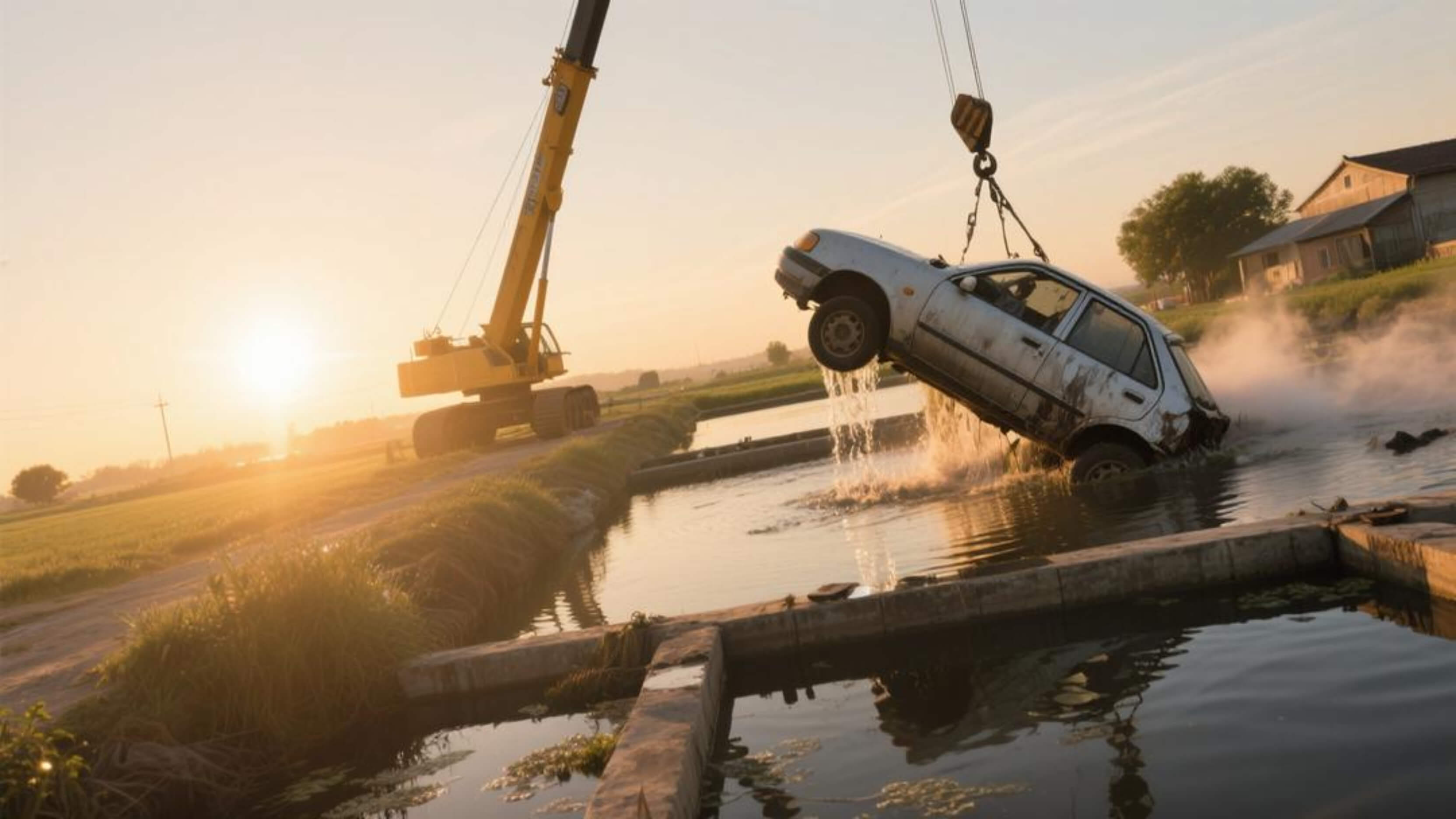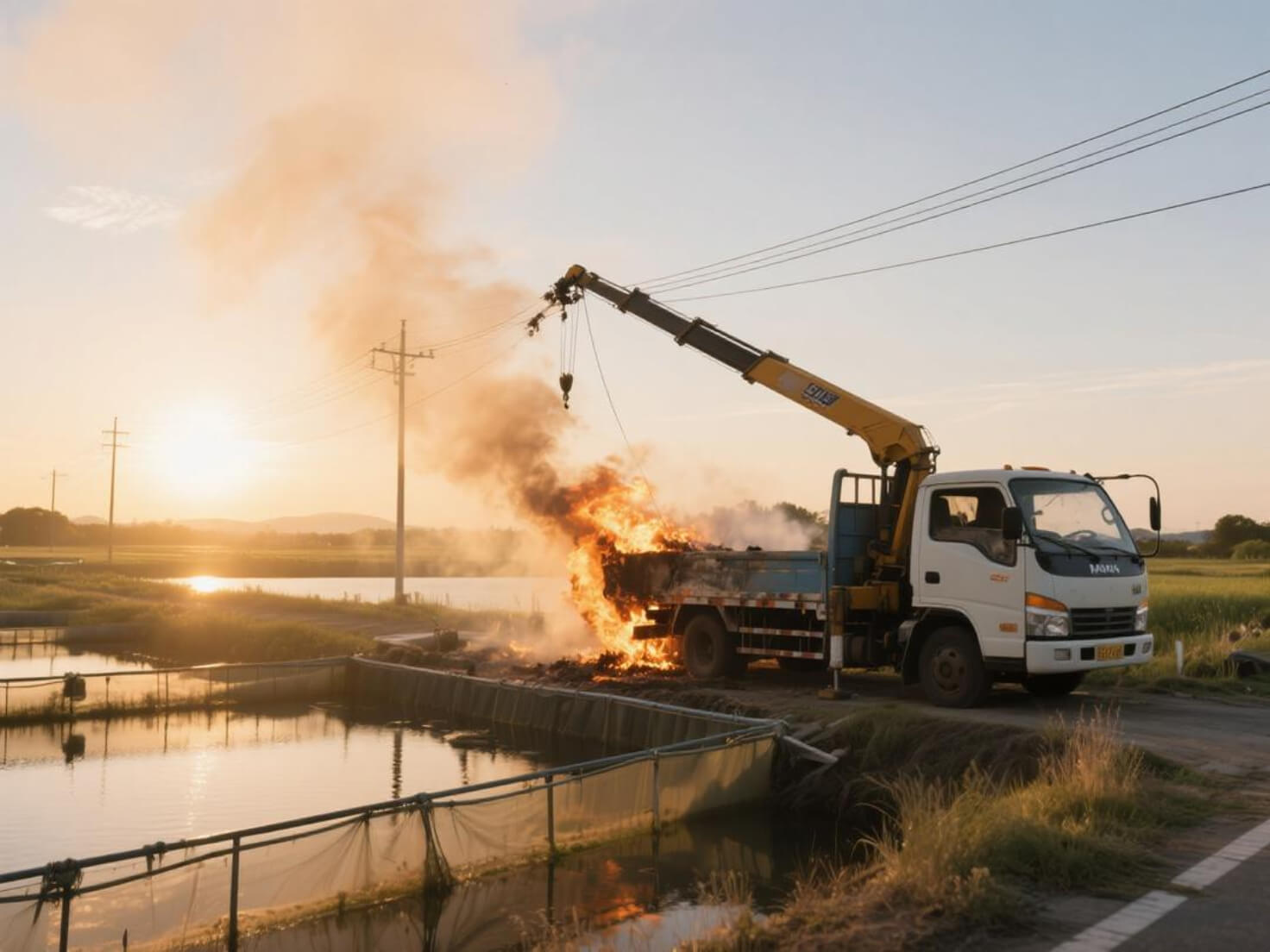Crane Topples Over Video Analysis: 4 Safety Rules for Muddy Fish Pond Operations | A Must-Read for Roadside Assistance

A few days ago, while scrolling through Facebook, I saw a video that almost made me burst out laughing. A crane was lifting a submerged car, and it seemed like the operation was going smoothly, but the next second—the entire crane flipped over and fell into a fish pond!
It's truly a case of "hoisted by one's own petard."
Video Source: Facebook Reel
🎬 What happened in the video?
The scene is by a fish pond, where a clearly submerged car is being lifted. The crane operator's action seems to be to lift the car from the pond to the flat ground on the shore, but before the car was even set down, the crane itself took a dive.
The entire crane suddenly lost its balance while turning, tipping forward, and crashing into the fish pond, boom and all. Onlookers gasped in shock, and some even burst out laughing, making the atmosphere feel like an accidental variety show.
💬 The netizens' comments were brilliant
The comment section completely exploded, with all kinds of roasts, mockery, and technical analysis:
"This is a crane operated by an idiot"
"Still not retracting the boom, playing at bungee jumping?"
"The higher you lift, the faster you flip"
"The alarm is blaring like that and he still keeps lifting?"
"The moron insists on experiencing the lever principle with his own vehicle"
"How can someone with this kind of skill operate a crane?"
Laughing while reading, the entire comment section felt like a public trial for the crane industry.
✅ My professional analysis (I'm also a rigger)
After watching the video, I couldn't help but shake my head. This accident, in fact, had very obvious problems and was completely avoidable.
1. Lifting too high, and not lowering the height before turning
In the video, the car was lifted very high, estimated to be about three or four stories high.
If there are no obstacles below, the lower you lift, the safer it is. The higher you lift, the greater the wind resistance, the stronger the sway, and the more easily the center of gravity shifts. Especially when turning or moving, if you don't lower the vehicle and adjust the center of gravity first, the entire crane will tip forward as soon as the ground is a little unstable.
To put it bluntly: moving heavy objects at high altitudes is a major taboo for cranes. If you can go low, don't go high. This isn't showing off, it's about staying alive.
2. The car was full of water, exceeding the weight limit
This wasn't just a submerged car; it was a car full of water. If the water isn't drained first, the weight far exceeds expectations, directly increasing the lifting pressure. Lifting it forcefully like this puts a huge burden on the crane itself.
3. The alarm was blaring, but he didn't stop
In the video, the alarm was beeping नॉन-स्टॉप, indicating that the crane had exceeded its safe angle or load range. But the driver completely ignored the alarm and continued to operate, basically treating the alarm as background music.
4. The muddy ground by the fish pond is extremely dangerous
This last point was the final straw that broke the crane's back. The terrain next to this type of fish pond is almost always extremely soft mud. I have personal experience with this—this kind of ground simply cannot withstand the lateral pressure of a crane.
If you don't lay down steel plates, wooden planks, or other force-distributing devices, the crane's outriggers will sink as soon as they are pressed down, and the whole vehicle can easily lose its balance. More importantly: On this kind of ground, you must be slow, steady, and low.
When lifting, the lower the better, the more stable the center of gravity. Even if the ground sinks a little, at most the vehicle will just tilt a bit, not flip over completely. But if you lift it high from the start, and the ground sinks, then the center of gravity shifts, and the crane will flip right over, with no time to react.
📌 A few reminders for my fellow crane operators
To avoid this tragedy of "lifting others and ending up lifting yourself," the following points must be noted:
- Muddy ground = dangerous terrain, you must use pads to distribute the weight.
- When lifting heavy objects, lower the height and adjust the center of gravity before turning.
- Lift a submerged car slowly to let the water drain out gradually; do not lift it all at once.
- When the alarm sounds, it means the crane is approaching danger. The driver must be extra careful to avoid tipping over.
🤣 Concluding golden sentence
A crane operator isn't performing a high-wire act; lifting steadily is what makes a seasoned pro. Unstable ground, heavy vehicle, it's just asking to be flipped.
Every lifting operation is no small matter; professionalism and risk assessment are equally important. It's not about being unable to lift, but about judging incorrectly. In this line of work, respecting the weight and operating मौसम is the key to longevity.



